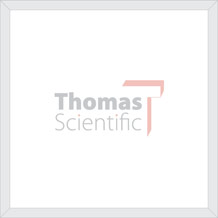G-Biosciences Chemicals Reagents B
-
ß-Mercaptoethanol
G-BiosciencesHigh quality proteomic grade β-mercaptoethanol. β-mercaptoethanol, a popular reducing agent, is offered in 5ml and 100ml bottles. Features Synonym: β-Mercaptoethanol CAS#: 60-24-2 Molecular Formula: C2H6OS Molecular Weight: 78.13 …
-
( Bis (2-[Succinimidooxycarbonyloxy]ethyl) sulfone Features Molecular Weight: 436.35 Spacer Arm (Å): 13 Reactive Toward: Primary Amines Membrane Permeable: YES Water Soluble: NO Cleavable/ Reversible: Base
-
HOOK™-NHS-Biotin
G-BiosciencesHOOK™ NHS-Biotin reacts with protein primary amines. Amines, lysine ε-amines and N-terminal α-amines, are the most abundant group in protein molecules and represent the most common target for biotinylation. For example, BSA contains 59 primary amines, of which up to 35 are…
-
HOOK™-PFP-Biotin
G-BiosciencesHOOK™ PFP-Biotin reacts with protein primary amines.Amines, lysine ε-amines and N-terminal α-amines, are the most abundant group in protein molecules and represent the most common target for biotinylation. For example, BSA contains 59 primary amines, of which up to 35 are…
-
HOOK™-Psoralen-PEO-Biotin
G-BiosciencesThe use of biotin for non-radioactive labeling of proteins and nucleic acids has now become an increasingly popular technique in life science research. Several factors must be considered when coupling a biotin reagent to a protein to ensure a successful reaction. The primary consideration is the…
-
G-Biosciences Bolton-Hunter Reagent conjugatestyrosine-like groups to end-terminal α-amino groups or ε-amino groups of lysineto increase the number of tyrosyl groups that can be iodinated by iodine-125 labeling procedures. Radioactive iodine ( 125 I) is routinely used by…
-
HOOK™-Biotin-BMMCC
G-BiosciencesHOOK™ Biotin-BMMCC reacts with protein free sulhydryl groups. Sulfhydryl reactive reagents are more specific and react only with free sulfhydryl residues (-SH or thiol groups). The side chain of the amino acid cysteine is the most common source of free sulfhydryl groups. If free sulfhydryl…
-
-
HOOK™-NHS-LC-LC-Biotin
G-BiosciencesHOOK™ NHS-LC-LC-Biotin reacts with protein primary amines.Amines, lysine ε-amines and N-terminal α-amines, are the most abundant group in protein molecules and represent the most common target for biotinylation. For example, BSA contains 59 primary amines, of which up to 35 are…
-
HOOK™-Biotin-PEG3-Amine
G-BiosciencesThe use of biotin for non-radioactive labeling of proteins and nucleic acids has become an increasingly popular technique in life science research. Several factors must be considered when coupling a biotin reagent to a protein in order to ensure a successful reaction. The primary consideration is…
-
HOOK™-Biotin-Hydrazide
G-BiosciencesThe use of biotin for non-radioactive labeling of proteins and nucleic acids has now become an increasingly popular technique in life science research. Several factors must be considered when coupling a biotin reagent to a protein to ensure a successful reaction. The primary consideration is the…
-
HOOK™-NHS-SS-Biotin
G-BiosciencesHOOK™ NHS-SS-Biotin reacts with protein primary amines.Amines, lysine ε-amines and N-terminal α-amines, are the most abundant group in protein molecules and represent the most common target for biotinylation. For example, BSA contains 59 primary amines, of which up to 35 are…
-
HOOK™-Iodoacetyl-LC-Biotin
G-BiosciencesHOOK™ Iodoacetyl-LC-Biotin reacts with protein free sulhydryl groups. Sulfhydryl reactive reagents are more specific and react only with free sulfhydryl residues (-SH or thiol groups). The side chain of the amino acid cysteine is the most common source of free sulfhydryl groups. If free…
-
Blue-OUT™
G-BiosciencesBlue-OUT™ is a unique product that washes the interfering Coomassie and fluorescent protein stains from gel pieces prior to their treatment for protein sequencing or mass spectrometry. Also supplied in the InGel™ Blue kit for the tryptic digestion and peptide extraction of…
-
HOOK™ NHS-dPEG4 -Biotin
G-BiosciencesHOOK™ NHS-dPEG™4-Biotin reacts with protein primary amines.Amines, lysine ε-amines and N-terminal α-amines, are the most abundant group in protein molecules and represent the most common target for biotinylation. For example, BSA contains 59 primary amines, of which up to…
-
HOOK™-Biotin-LC-Hydrazide
G-BiosciencesThe use of biotin for non-radioactive labeling of proteins and nucleic acids has now become an increasingly popular technique in life science research. Several factors must be considered when coupling a biotin reagent to a protein to ensure a successful reaction. The primary consideration is the…
-
HOOK™-NHS-LC-Biotin
G-BiosciencesHOOK™-NHS-LC-Biotin reacts with protein primary amines. Amines, lysine ε-amines and N-terminal α-amines, are the most abundant group in protein molecules and represent the most common target for biotinylation. For example, BSA contains 59 primary amines, of which up to 35 are…
-
HOOK™-Biotin-PEG2-Amine
G-BiosciencesThe use of biotin for non-radioactive labeling of proteins and nucleic acids has become an increasingly popular technique in life science research. Several factors must be considered when coupling a biotin reagent to a protein in order to ensure a successful reaction. The primary consideration is…
-
HOOK™-PEG2-Iodoacetyl-Biotin
G-BiosciencesHOOK™ PEG2-Iodoacetyl-Biotin reacts with protein free sulhydryl groups. Sulfhydryl reactive reagents are more specific and react only with free sulfhydryl residues (-SH or thiol groups). The side chain of the amino acid cysteine is the most common source of free sulfhydryl…
-
BASED (Bis [B-(4-azidosalicylamido)ethyl]disulfide)
G-BiosciencesBis (β-[4-azidosalicylamido]-ethyl) disulfide Iodinatable Features Molecular Weight: 474.52 Spacer Arm (Å): 21.3 Reactive Toward: Non Selective Membrane Permeable: YES Water Soluble: NO Cleavable/ Reversible: Reducing Agents (Thiols)
-
HOOK™-Biotin-PDA
G-BiosciencesHOOK™ Biotin-PDA reacts with protein free sulhydryl groups. Sulfhydryl reactive reagents are more specific and react only with free sulfhydryl residues (-SH or thiol groups). The side chain of the amino acid cysteine is the most common source of free sulfhydryl groups. If free sulfhydryl…




![BSOCOES (Bis [2-(Succinimidooxycarbonyloxy)ethyl] Sulfone)](https://cdn.thomassci.com/_resources/_global/media/resized/00704/ihwx.DCE62F91-7E65-4B71-B9C6-F4E0218253BC.180.180.jpg)









